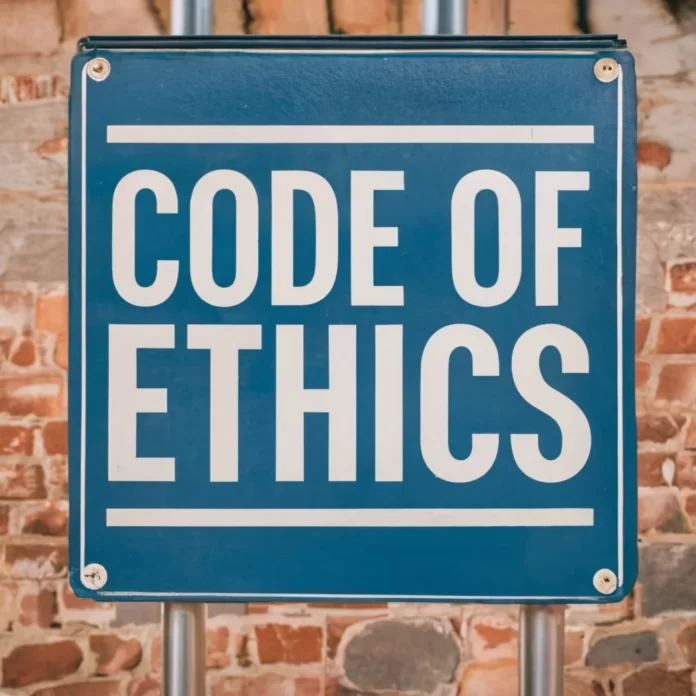Code of Ethics for Supreme Court Justices
The Supreme Court of the United States has recently promulgated a formal Code of Conduct for its justices, which is designed to set out succinctly the ethics rules and principles governing their conduct. This code includes canons such as upholding the integrity and independence of the judiciary and avoiding impropriety and the appearance of impropriety in all activities. The code also contains sections that specify restrictions on participation in fundraising, acceptance of gifts, and the use of judicial resources for non-official activities.
Previously, the Supreme Court justices were not bound by the Code of Conduct for U.S. Judges, which applies to other federal judges. However, the absence of a formal code of conduct for the Supreme Court had led to calls for greater transparency and accountability in the federal judiciary. The new code has been introduced in response to outside pressure and criticism over the lack of a binding ethics code for the Supreme Court justices.
While the new code is a significant development, some critics have raised concerns about the apparent absence of any enforcement mechanism. Additionally, legal scholars have suggested that Congress may use its statutory authority to compel the acceptance of the code by the Supreme Court justices.
Table of Contents
Existing Codes of Ethics for Federal Judges
- Code of Conduct for United States Judges:
- The Code of Conduct for United States Judges applies to various categories of federal judges, including:
- United States circuit judges
- District judges
- Court of International Trade judges
- Court of Federal Claims judges
- Bankruptcy judges
- Magistrate judges.
- The code encompasses ethical canons guiding the behavior of federal judges in the performance of their official duties.
- Key provisions of the code include guidance on:
- Judicial integrity
- Independence
- Impartiality
- Permissible extra-judicial activities
- The avoidance of impropriety or its appearance.
- Adoption and Revisions:
- The Code of Conduct for United States Judges was initially adopted by the Judicial Conference on April 5, 1973.
- Since its adoption, the code has undergone revisions to ensure its relevance and effectiveness.
- Purpose and Intent:
- The primary purpose of the code is to provide guidance to federal judges and nominees for judicial positions.
- The aim is to maintain and enforce high standards of conduct, thereby preserving the integrity and independence of the judiciary.
- Exclusion of Supreme Court Justices:
- Importantly, the Code of Conduct for United States Judges does not explicitly apply to Justices of the U.S. Supreme Court.
- Supreme Court justices are the only federal judges not bound by this code.
- This distinction has prompted discussions and proposals advocating for a formal code of conduct specifically tailored for Supreme Court justices.
Need for a Code of Ethics for U.S. Supreme Court Justices
- Lack of a Formal Code of Conduct for Supreme Court Justices:
- The U.S. Supreme Court stands as the sole federal court without a formal code of conduct, distinguishing it from other state and federal courts.
- Arguments for the Necessity of a Code of Ethics for Supreme Court Justices:
- The absence of a specific code of conduct for Supreme Court justices has sparked discussions regarding the necessity for clear and enforceable rules to ensure ethical conduct.
- Advocates emphasize the unique position of Supreme Court justices, arguing that:
- Their decisions cannot be reviewed by other judges.
- Their conduct reflects not only on the Supreme Court but also on the entire judicial system.
- Necessitates stringent guidelines for:
- Recusal
- Prohibitions against conduct that creates an appearance of partiality
- Rigorous obligations for disclosure
- Standards for transparent decision-making.
- Discussion of the Unique Circumstances and Responsibilities of Supreme Court Justices:
- Supreme Court justices hold the highest profile among judges in the country.
- They have nearly unfettered control over which cases they choose to hear.
- Their decisions cannot be reviewed by other judges, underscoring the need for clear and stringent ethical guidelines.
- Recent Adoption and Critiques:
- There have been recent discussions on the adoption of a formal code of conduct for Supreme Court justices.
- Mixed reviews have emerged, with some critics highlighting the apparent absence of any enforcement mechanism for the code.
How does the supreme court enforce its code of conduct?
The recently adopted Code of Conduct by the Supreme Court lacks a specified enforcement mechanism, leaving uncertainty about who would determine whether a justice violated any part of the code. This absence of a clear enforcement process has sparked criticism and raised concerns about the practical impact of the code in addressing ethics violations. Despite being a noteworthy step towards establishing clear ethical standards for Supreme Court justices, the code is nonbinding and does not include a formal mechanism to investigate potential violations or enforce the stipulated rules.
What are the consequences for violating the supreme court’s code of conduct?
- Code Adoption:
The recently adopted Code of Ethics for Supreme Court Justices aligns the Supreme Court with ethical rules followed by lower court judges. - Ethical Standards:
The code emphasizes crucial principles, requiring justices to uphold the integrity and independence of the judiciary and avoid impropriety in all activities. - Enforcement Mechanism Concerns:
Critics express concerns about the absence of a specified enforcement mechanism within the code, raising questions about its effectiveness in addressing ethical violations. - Nonbinding Nature:
Despite being a significant step toward ethical clarity, the code is nonbinding, lacking a formal mechanism to investigate and enforce stipulated rules. - Limited Practical Impact:
Due to its nonbinding nature and the absence of a robust enforcement mechanism, the practical impact of the code in addressing ethics violations may be limited.
